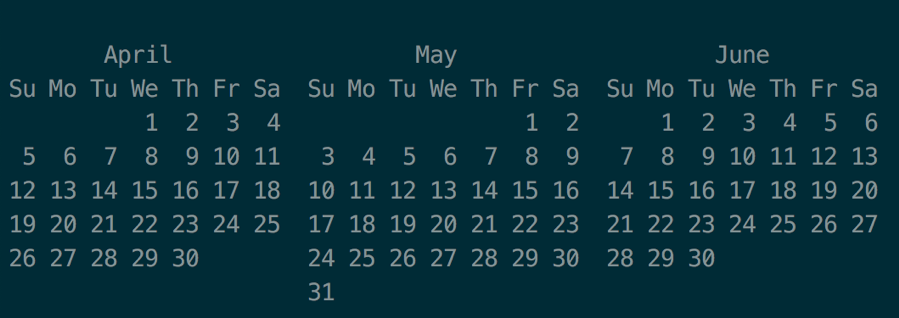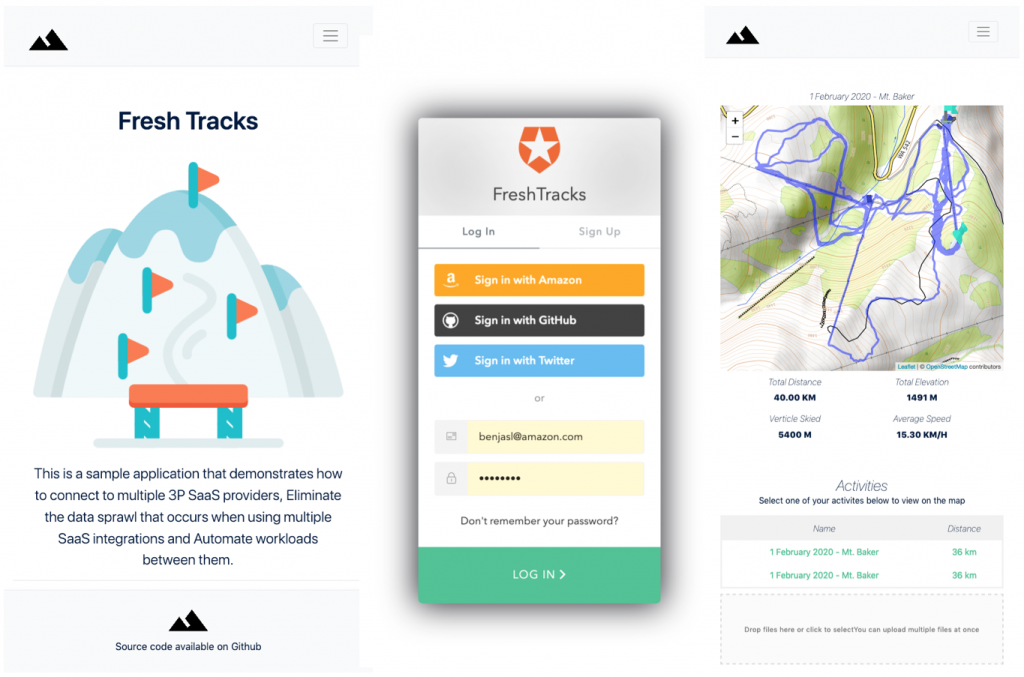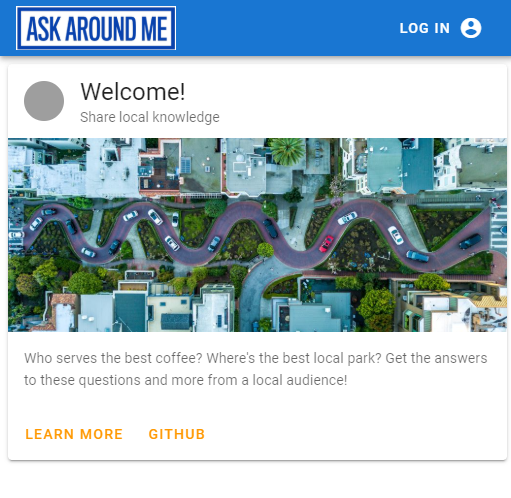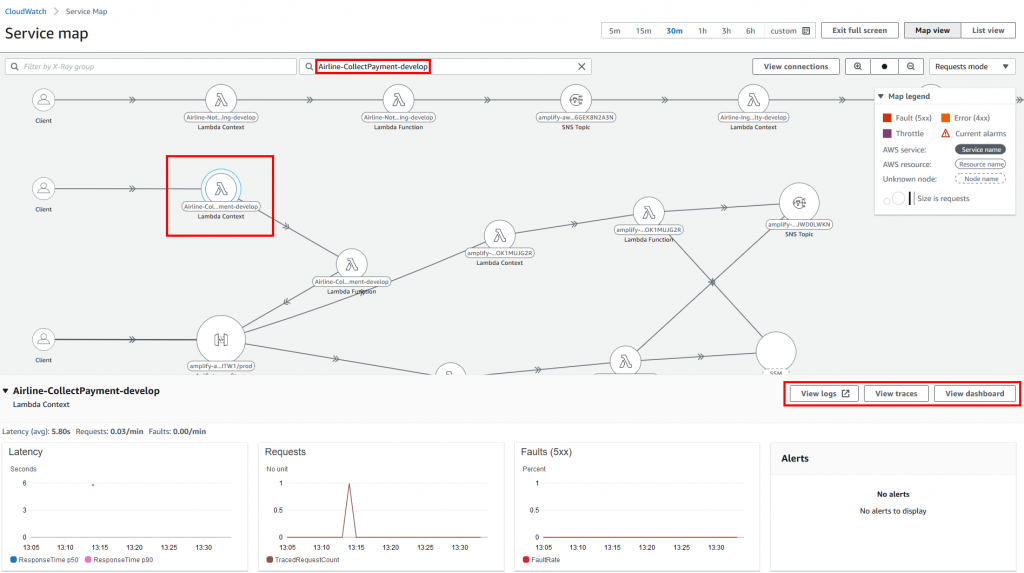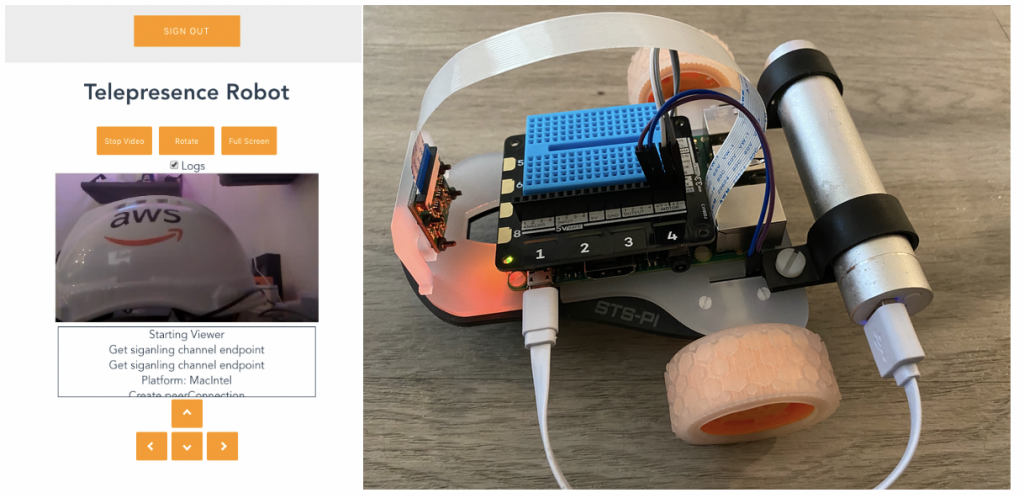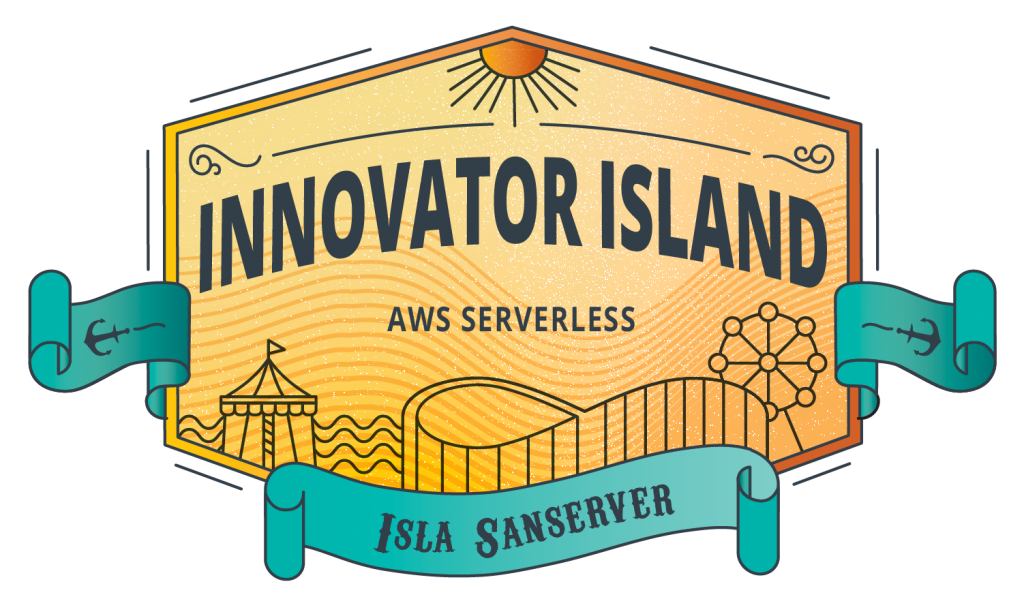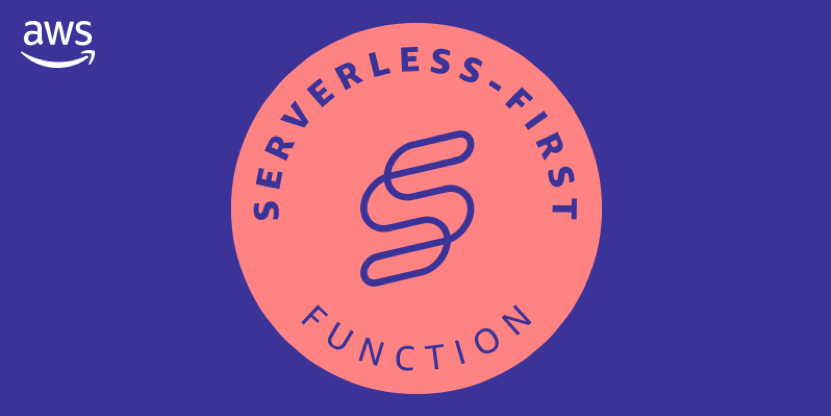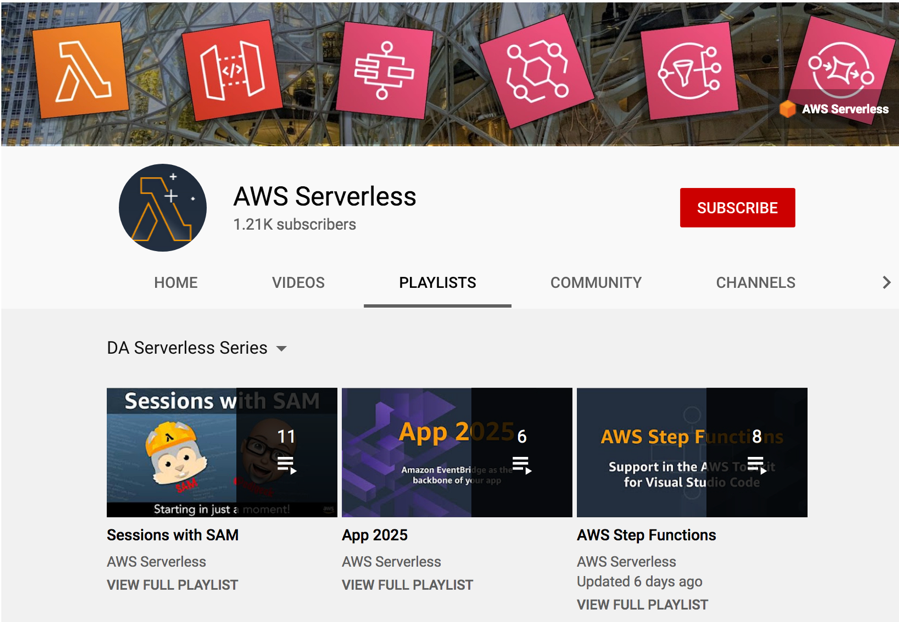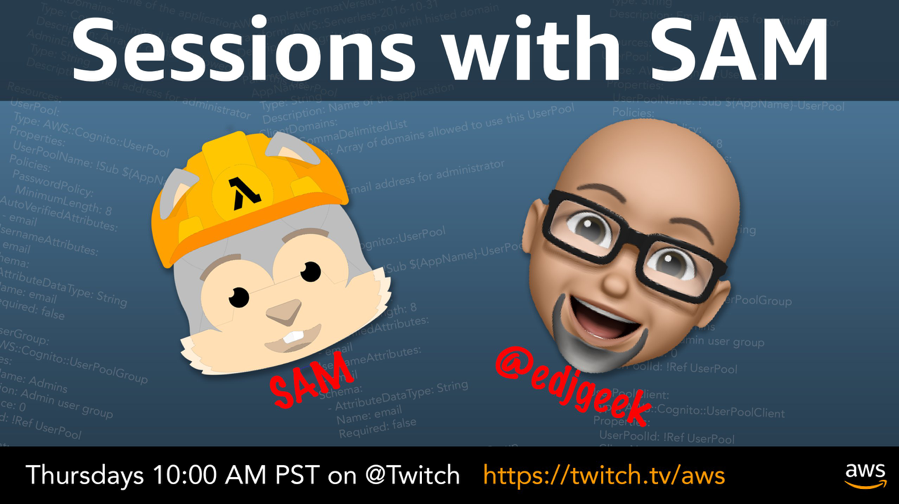AWS Compute Blog
ICYMI: Serverless Q2 2020
Welcome to the 10th edition of the AWS Serverless ICYMI (in case you missed it) quarterly recap. Every quarter, we share all of the most recent product launches, feature enhancements, blog posts, webinars, Twitch live streams, and other interesting things that you might have missed!
In case you missed our last ICYMI, checkout what happened last quarter here.
AWS Lambda
AWS Lambda functions can now mount an Amazon Elastic File System (EFS). EFS is a scalable and elastic NFS file system storing data within and across multiple Availability Zones (AZ) for high availability and durability. In this way, you can use a familiar file system interface to store and share data across all concurrent execution environments of one, or more, Lambda functions. EFS supports full file system access semantics, such as strong consistency and file locking.
Using different EFS access points, each Lambda function can access different paths in a file system, or use different file system permissions. You can share the same EFS file system with Amazon EC2 instances, containerized applications using Amazon ECS and AWS Fargate, and on-premises servers.
Learn how to create an Amazon EFS-mounted Lambda function using the AWS Serverless Application Model in Sessions With SAM Episode 10.
With our recent launch of .NET Core 3.1 AWS Lambda runtime, we’ve also released version 2.0.0 of the PowerShell module AWSLambdaPSCore. The new version now supports PowerShell 7.
Amazon EventBridge
At AWS re:Invent 2019, we introduced a preview of Amazon EventBridge schema registry and discovery. This is a way to store the structure of the events (the schema) in a central location. It can simplify using events in your code by generating the code to process them for Java, Python, and TypeScript. In April, we announced general availability of EventBridge Schema Registry.
We also added support for resource policies. Resource policies allow sharing of schema repository across different AWS accounts and organizations. In this way, developers on different teams can search for and use any schema that another team has added to the shared registry.
Ben Smith, AWS Serverless Developer Advocate, published a guide on how to capture user events and monitor user behavior using the Amazon EventBridge partner integration with Auth0. This enables better insight into your application to help deliver a more customized experience for your users.
AWS Step Functions
In May, we launched a new AWS Step Functions service integration with AWS CodeBuild. CodeBuild is a fully managed continuous integration service that compiles source code, runs tests, and produces packages that are ready for deployment. Now, during the execution of a state machine, you can start or stop a build, get build report summaries, and delete past build executions records.
With the new AWS CodePipeline support to invoke Step Functions you can customize your delivery pipeline with choices, external validations, or parallel tasks. Each of those tasks can now call CodeBuild to create a custom build following specific requirements. Learn how to build a continuous integration workflow with Step Functions and AWS CodeBuild.
Rob Sutter, AWS Serverless Developer Advocate, has published a video series on Step Functions. We’ve compiled a playlist on YouTube to help you on your serverless journey.
AWS Amplify
The AWS Amplify Framework announced in April that they have rearchitected the Amplify UI component library to enable JavaScript developers to easily add authentication scenarios to their web apps. The authentication components include numerous improvements over previous versions. These include the ability to automatically sign in users after sign-up confirmation, better customization, and improved accessibility.
Amplify also announced the availability of Amplify Framework iOS and Amplify Framework Android libraries and tools. These help mobile application developers to easily build secure and scalable cloud-powered applications. Previously, mobile developers relied on a combination of tools and SDKS along with the Amplify CLI to create and manage a backend.
These new native libraries are oriented around use-cases, such as authentication, data storage and access, machine learning predictions etc. They provide a declarative interface that enables you to programmatically apply best practices with abstractions.
A mono-repository is a repository that contains more than one logical project, each in its own repository. Monorepo support is now available for the AWS Amplify Console, allowing developers to connect Amplify Console to a sub-folder in your mono-repository. Learn how to set up continuous deployment and hosting on a monorepo with the Amplify Console.
Amazon Keyspaces (for Apache Cassandra)
Amazon Managed Apache Cassandra Service (MCS) is now generally available under the new name: Amazon Keyspaces (for Apache Cassandra). Amazon Keyspaces is built on Apache Cassandra and can be used as a fully managed serverless database. Your applications can read and write data from Amazon Keyspaces using your existing Cassandra Query Language (CQL) code, with little or no changes. Danilo Poccia explains how to use Amazon Keyspace with API Gateway and Lambda in this launch post.
AWS Glue
In April we extended AWS Glue jobs, based on Apache Spark, to run continuously and consume data from streaming platforms such as Amazon Kinesis Data Streams and Apache Kafka (including the fully-managed Amazon MSK). Learn how to manage a serverless extract, transform, load (ETL) pipeline with Glue in this guide by Danilo Poccia.
Serverless posts
Our team is always working to build and write content to help our customers better understand all our serverless offerings. Here is a list of the latest published to the AWS Compute Blog this quarter.
Introducing the new serverless LAMP stack
Ben Smith, AWS Serverless Developer Advocate, introduces the Serverless LAMP stack. He explains how to use serverless technologies with PHP. Learn about the available tools, frameworks and strategies to build serverless applications, and why now is the right time to start.
- Introducing the new Serverless LAMP stack
- Introducing the serverless LAMP stack – part 2 relational databases
Building a location-based, scalable, serverless web app
James Beswick, AWS Serverless Developer Advocate, walks through building a location-based, scalable, serverless web app. Ask Around Me is an example project that allows users to ask questions within a geofence to create an engaging community driven experience.
- Building a location-based, scalable, serverless web app – part 1
- Building a location-based, scalable, serverless web app – part 2
- Building a location-based, scalable, serverless web app – part 3
Building well-architected serverless applications
Julian Wood, AWS Serverless Developer Advocate, published two blog series on building well-architected serverless applications. Learn how to better understand application health and lifecycle management.
- Building well-architected serverless applications: Understanding application health – part 1
- Building well-architected serverless applications: Understanding application health – part 2
- Building well-architected serverless applications: Approaching application lifecycle management – part 1
- Building well-architected serverless applications: Approaching application lifecycle management – part 2
- Building well-architected serverless applications: Approaching application lifecycle management – part 3
Device hacking with serverless
Go beyond the browser with these creative and physical projects. Moheeb Zara, AWS Serverless Developer Advocate, published several serverless powered device hacks, all using off the shelf parts.
- Building a Raspberry Pi telepresence robot using serverless: Part 2
- Build a serverless Martian weather display with CircuitPython and AWS Lambda
- Adding voice to a CircuitPython project using Amazon Polly
April
- Creating a searchable enterprise document repository
- How to schedule recurring Lambda functions using the Amplify CLI
- Creating a searchable enterprise document repository
- GraphQL API Security with AWS AppSync and Amplify
- How CAPMO uses AWS to Revolutionize the Construction Industry
- Creating event-based notifications and remediation in AWS Service Catalog using AWS Config
- Bootstrapping a Java Lambda application with minimal AWS Java SDK startup time using Maven
- Translating documents at enterprise scale with serverless
- Branch’s Serverless First Architecture Approach Makes it Easy to Bundle Home and Auto Coverage
- Automating scalable business workflows using minimal code
- Decoupling larger applications with Amazon EventBridge
- Building an automated knowledge repo with Amazon EventBridge and Zendesk
- Level Up Your Serverless Applications with AWS Lambda Ready Partners
- One Month Update to .NET Core 3.1 Lambda
- Using GitLab CI/CD Pipeline to Deploy AWS SAM Applications
May
- Using AWS ParallelCluster with a serverless API
- Simplifying application orchestration with AWS Step Functions and AWS SAM
- Fine-grained Continuous Delivery With CodePipeline and AWS Step Functions
- Building a Scalable Document Pre-Processing Pipeline
- Register now for the first virtual AWS Serverless-First Function
- Monitoring Your Palo Alto Networks VM-Series Firewall with a Syslog Sidecar
- Using dynamic Amazon S3 event handling with Amazon EventBridge
- Q/Kdb+ on AWS Lambda: Serverless Time-Series Analytics at Scale
- NYC COVID-19 Rapid Response Coalition helps MetroPlus Health Plan partner to address the health and social needs of thousands at risk
- Provision AWS infrastructure using Terraform (By HashiCorp): an example of web application logging customer data
- Best practices for organizing larger serverless applications
- Delivering rugged video and spatial streaming capability in a flexible, cost-effective solution
- Building scalable serverless applications with Amazon S3 and AWS Lambda
- How Arcadia.io is Responding to COVID-19 with AWS
- Automate account creation and resource provisioning for AWS GovCloud (US), using AWS Service Catalog, AWS Organizations, and AWS Lambda
June
- Creating a secure video-on-demand (VOD) platform using AWS
- Making Serverless CI/CD Easier with CircleCI and Serverless Framework
- Refinancing Like Clockwork at VAI
- How AWS live streams re:Invent
- How to automate the creation of multiple accounts in AWS Control Tower
- Case Study: Genflix Transforms OTT Service with CloudCover and AWS
- New – A Shared File System for Your Lambda Functions
- How Opus One Solutions is helping utilities decarbonize effectively with AWS-powered planning system
- Implement AWS AppSync custom authorization with pipeline resolvers
- Creating serverless applications with the AWS Cloud Development Kit
- Using Amazon EFS for AWS Lambda in your serverless applications
- Nautilus reshapes fitness offerings with Slalom Build and AWS
- User Issue Reporter for Amazon AppStream 2.0
- Implementing geohashing at scale in serverless web applications
- Simplifying serverless best practices with Lambda Powertools
- Building multilingual SMS chatbot campaigns to support COVID-19 patients remotely
- Serverless Architecture for a Web Scraping Solution
- Automating Rotation of IAM User Access and Secret Keys with AWS Secrets Manager
- Tuning the AWS Java SDK 2.x to reduce startup time
- Managing backend requests and frontend notifications in serverless web apps
- How Wind Mobility built a serverless data architecture
- Using AWS ParallelCluster serverless API for AWS Batch
- How to deploy a live events solution built with the Amazon Chime SDK
- Building a Cash Flow App with Amplify DataStore and SwiftUI
Tech Talks and events
We hold AWS Online Tech Talks covering serverless topics throughout the year. You can find these in the serverless section of the AWS Online Tech Talks page. We also regularly join in on podcasts, and record short videos you can find to learn in quick bite-sized chunks.
Here are the highlights from Q2.
- Mastering Observability of Your Serverless Applications
- Choosing Events, Queues, Topics, and Streams in Your Serverless Application
- Building Your First Application with AWS Lambda
- Serverless Security Strategies: Under the Hood
Innovator Island Workshop
Learn how to build a complete serverless web application for a popular theme park called Innovator Island. James Beswick created a video series to walk you through this popular workshop at your own pace.
- Build a Serverless Web App for a Theme Park, Episode 1: Launching the Serverless Web Application
- Build a Serverless Web App for a Theme Park, Episode 2: Real-time Messaging with Serverless Web Applications
- Build a Serverless Web App for a Theme Park, Episode 3: On-ride Serverless Photo Processing
- Build a Serverless Web App for a Theme Park, Episode 4: Park Statistics and Business Insights
- Build a Serverless Web App for a Theme Park, Episode 5: Developing an Event-driven Architecture
Serverless First Function
In May, we held a new virtual event series, the Serverless-First Function, to help you and your organization get the most out of the cloud. The first event, on May 21, included sessions from Amazon CTO, Dr. Werner Vogels, and VP of Serverless at AWS, David Richardson. The second event, May 28, was packed with sessions with our AWS Serverless Developer Advocate team. Catch up on the AWS Twitch channel.
Live streams
The AWS Serverless Developer Advocate team hosts several weekly livestreams on the AWS Twitch channel covering a wide range of topics. You can catch up on all our past content, including workshops, on the AWS Serverless YouTube channel.
Eric Johnson hosts “Sessions with SAM” every Thursday at 10AM PST. Each week, Eric shows how to use SAM to solve different serverless challenges. He explains how to use SAM templates to build powerful serverless applications. Catch up on the last few episodes.
James Beswick, AWS Serverless Developer Advocate, has compiled a round-up of all his content from Q2. He has plenty of videos ranging from beginner to advanced topics.
AWS Serverless Heroes
We’re pleased to welcome Kyuhyun Byun and Serkan Özal to the growing list of AWS Serverless Heroes. The AWS Hero program is a selection of worldwide experts that have been recognized for their positive impact within the community. They share helpful knowledge and organize events and user groups. They’re also contributors to numerous open-source projects in and around serverless technologies.
Still looking for more?
The Serverless landing page has much more information. The Lambda resources page contains case studies, webinars, whitepapers, customer stories, reference architectures, and even more getting started tutorials.
You can also follow all of us on Twitter to see latest news, follow conversations, and interact with the team.
Chris Munns: @chrismunns
Eric Johnson: @edjgeek
James Beswick: @jbesw
Moheeb Zara: @virgilvox
Ben Smith: @benjamin_l_s
Rob Sutter: @rts_rob
Julian Wood: @julian_wood
